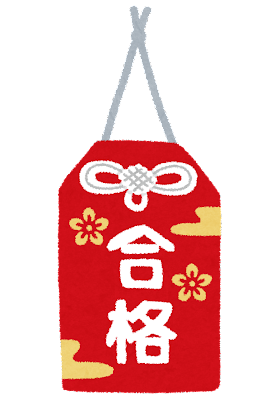|
|
Fun Facts
Shinto
Shinto is Japan’s most commonly practiced religion for the belief of kami. Kami translates to spirit or deity, and millions of different kami make up Shinto. What are kami, and why are there so many? The concept of kami is that spirits of ancestors, loved ones, animals, and mythological figures are within many objects and can represent nearly any occasion. For example, Inari is the kami for all of Japan’s essentials, such as agriculture, fertility, and prosperity. Ebisu is the kami for Japan’s fishermen and tradesmen, luck, fortune, and protection. Japan even has kami that might seem strange. One of the reasons why toilets are always clean in Japan no matter the location is because of the Shinto belief that there is a kawaya kami, or a toilet spirit. People are devoted to kami in other ways. In many households, kamidana are small altars dedicated to kami.

Shrines
There are about 100,000 Shinto shrines located within Japan for the devotion of many kami. Many shrines are accompanied by torii, which are traditional Japanese gates that are a sacred protection against evil. Before walking through a torii, many people bow once and avoid walking through the center of it because the center is dedicated to the passage of kami.
Itsukushima Shrine is one of the many Shinto shrines in Japan. What makes Itsukushima Shrine famous is that its torii is located within the Seto Inland Sea, making it appear that the torii is floating on top of the water. When low tide exposes the torii, people are allowed to walk up to it.
Inari Shrine is another famous Shinto shrine because the main path to the shrine is surrounded by around 1,000 torii. Many of the torii were donated throughout hundreds of years because it is believed that donating the torii would bring good fortune. Some of those who prayed at the shrine and saw that their own wishes were fufilled would also donate torii gates to the shrine.
 Omamori are Japanese charms that are sold at Shinto shrines and other religious sites. An omamori is a small, silk pouch that is held by a thread that is tied with a tassel knot. Inside the pouch is a small piece of paper or wood that has a prayer etched onto it, but you should never open the pouch because the powers inside of the charm will be released. Some omamori are charms for success, such as charms for wealth, love, and good education. Other omamori are protection charms for safe traveling and overall health.
Omamori are Japanese charms that are sold at Shinto shrines and other religious sites. An omamori is a small, silk pouch that is held by a thread that is tied with a tassel knot. Inside the pouch is a small piece of paper or wood that has a prayer etched onto it, but you should never open the pouch because the powers inside of the charm will be released. Some omamori are charms for success, such as charms for wealth, love, and good education. Other omamori are protection charms for safe traveling and overall health.
Miko are shrine maidens who work at Shinto shrines. Miko are typically younger women who do multiple tasks around shrines, such as working at gift shops, educating the guests, performing sacred cleansing, and taking part in traditional Shinto practices that involve funerals, weddings, festivals, and other activities. They are also considered to be shamans for Shinto shrines, meaning that they have a strong connection with kami. Most people work as a miko as a part-time job because it is an easy way to earn a small amount of money. Some shrines allow guests to become a miko for a day to learn more about the daily tasks of taking care of a shrine.
Tea Ceremonies
 A tea ceremony is the traditional practice of serving tea to guests in a chashitsu. A chashitsu is a small building with traditional flooring called tatami mats, and it has wooden beams to support the walls. The small building is only used as a tea room for ceremonies. The practice is extremely formal; the tea is prepared carefully and silently, and each item used in the ceremony must be fully appreciated. Many tea bowls have finely crafted artwork painted or etched onto them. The artwork is facing the guests when they are handed the bowl. Once the guests look at the design, they turn the bowl around so that it faces the other participants.
A tea ceremony is the traditional practice of serving tea to guests in a chashitsu. A chashitsu is a small building with traditional flooring called tatami mats, and it has wooden beams to support the walls. The small building is only used as a tea room for ceremonies. The practice is extremely formal; the tea is prepared carefully and silently, and each item used in the ceremony must be fully appreciated. Many tea bowls have finely crafted artwork painted or etched onto them. The artwork is facing the guests when they are handed the bowl. Once the guests look at the design, they turn the bowl around so that it faces the other participants.
|